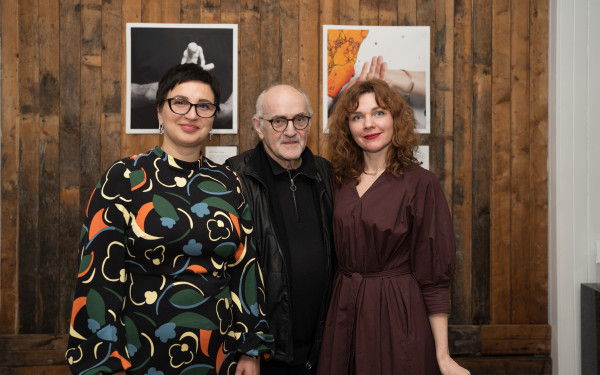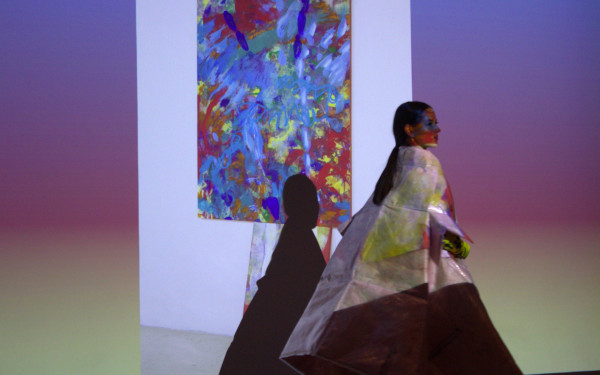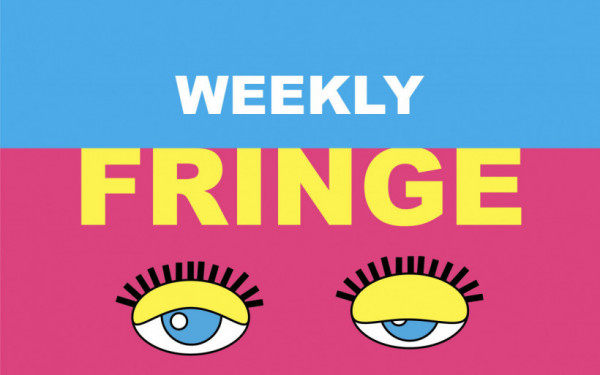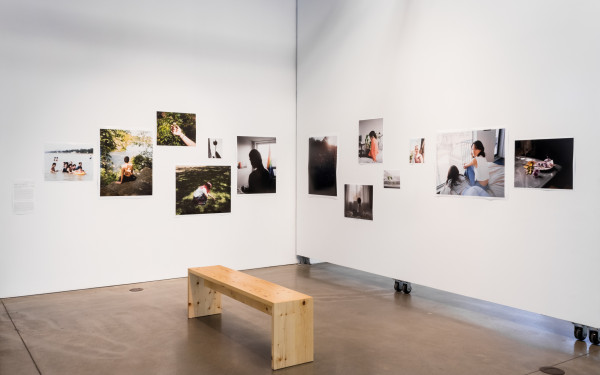Exploring identity through a sky of flowers
Artist Sierra Barber uses the symbolism of strawberries and flowers to discuss the layered experiences of her identity
When you walk into Galerie Shé:Kon, you forget the cold and gloom of winter. Using oil paints and beading, Sierra Barber brings life and vibrancy to the space.
On Feb 17, the gallery invited guests to Sky Flowers, an exhibit that features a mixture of oil paint and beading. Shé:kon is an exhibition space operated by The Contemporary Native Art Biennial (BACA) and focuses on showcasing solo exhibitions by up-and-coming Indigenous artists in Quebec.
“I first encountered Sierra Barber's artwork at Concordia Open Studios approximately a year ago,” said Michael Patten, the Director General of BACA. “I was instantly captivated by the beauty and innovation of her pieces and promptly offered her an exhibition opportunity.”
Barber received her bachelor of fine arts from the Ontario College of Art & Design University (OCAD) where she majored in sculpture. Currently, she is pursuing a master’s degree in fine arts in the painting and drawing program at Concordia University.
Using Haudenosaunee imagery such as strawberries and strawberry flowers against a blue sky, Barber explores and engages with her Upper Mohawk and mixed-European identity.
“It makes perfect sense for me to use [these mediums] in my work because they’re material languages with their own historical background,” said Barber. “Oil paintings are a colonial medium or method of creating, whereas beading represents more of my Indigenous side. Creating a painting or an image that exists within both of these materials at the same time really speaks to this idea of mixed identity.”
Expressing her identity through art was not easy for Barber. She explained that she grew up away from her community and her great-grandmother was a residential school survivor. It took a long time to engage with that side of herself, even though it makes up a significant part of who she is. Barber described learning to bead and seeing her work displayed at Shé:kon as “a new beginning.”
“It’s like I’m ready to fully be who I am now. I hesitated for a long time to learn how to bead but I realized it is a powerful thing for me to learn something that was meant to be taken from me,” she said.
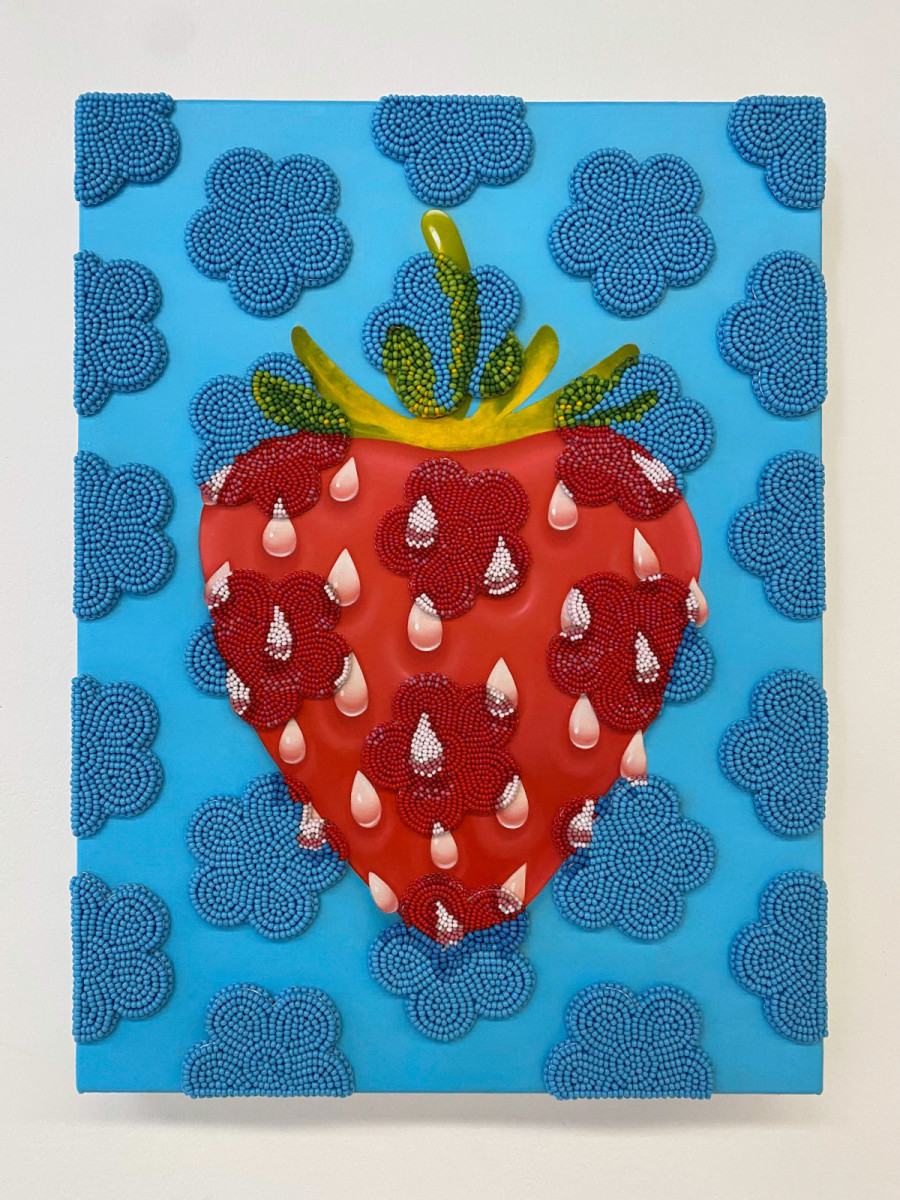
The Symbolism of Strawberries
Strawberries hold a deep significance for the Haudenosaunee people. According to the Haudenosaunee creation story, Sky Woman fell from the Sky World onto the back of a turtle. When she fell, she brought with her a handful of seeds, including seeds for strawberries.
“The strawberry comes from somewhere that is not here,” said Katsitsanoron Dumoulin-Bush, the curator of the exhibition. “That strawberry was brought to this place, to this earth for a purpose. We believe that is a medicine, that it lays the foundations both environmentally and symbolically for life. It protects other plants, it participates in the ecosystem, it provides us with so much throughout the entire year.”
Dumoulin-Bush explained that throughout the exhibition, she noticed how Barber’s personal story connected to the strawberry. Barber is originally from Port Dover, Ont., meaning she is Upper Mohawk, as opposed to Dumoulin-Bush who is Mohawk from the Montreal area.
“This journey that she's had of transplantation into the new place – into Montreal – where her work is enriching to the arts community and the Indigenous community. I think that personal symbolism is very strong and just so beautiful,” Dumoulin-Bush said.
Dumoulin-Bush described the work as inviting and optimistic. The bright colours invite the senses and make it easy to engage with.
“When you start looking at it, you see this meticulousness and commitment to detail to bringing this creation to life, bringing it into the 3D, to the real, into the tangible,” she said. “It really amazed me that someone could display that in their practice so openly and in such a clear, beautiful way.”
Sky Flowers will be on display at Galerie Shé:kon until April 20.
This article originally appeared in Volume 44, Issue 11, published March 5, 2024.

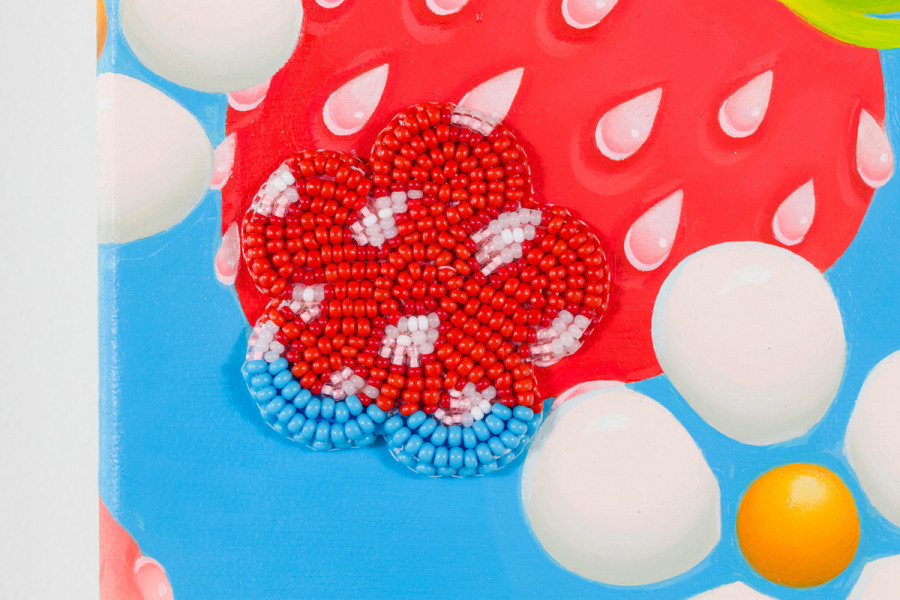
_600_832_s.png)

